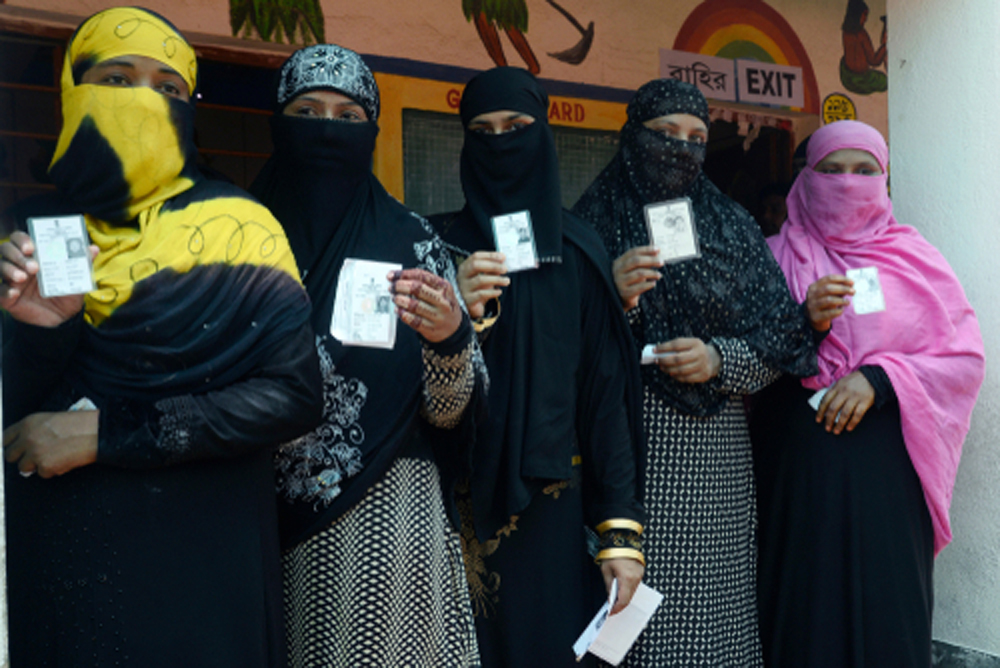In a world fixated on narratives of political Islam with all their variants, Hilal Ahmed’s Siyasi Muslims is a welcome addition. The ten chapters of the book are structured in three parts: part one examines how best we can make sense of the expression, “siyasi Muslims”; part two delves deeper to unpack the various debates gravitating around Ahmed’s subject of study, the siyasi Muslims; part three interrogates metaphors associated with the siyasi Muslims and seeks to connect them to the future of India’s democracy.
Ahmed situates his research against the wider backdrop of the problems that underwrite the project of defining “siyasi Muslims”: whether “siyasi”, true to its original Urdu/ Persian roots, ought to be seen as an adjective defining a “politically conscious community” or as a reductionist pejorative to denote opportunistic individuals and groups. There is, however, a subtly nuanced approach in Ahmed’s arguments that sets his book apart from works “defining Muslim politics in India”. By contrast, as he says, this is a study of Muslim “political discourse — an intellectual mode through which certain specific notions of Muslim identity in contemporary India are produced and sustained”. The author has marshalled sources of a diverse nature: official documents, pamphlets, booklets and so on; interviews with religious leaders and Muslim politicians; sources available in the world wide web and, finally, data generated by the Delhi-based Centre for the Study of Developing Societies--Lokniti on different facets of Muslim public life in postcolonial India.
Chapters one through four, all under part one, cover a wide sweep in conceptual terms: from reiterating the well-recognized need to provide a corrective to the colonial predicament of conceptualizing the community almost necessarily in terms of numbers (thus resulting in the sharp binaries of minority/majority), through discussing idioms of a “religious community”, “Islamization” in post-Independence times to issues at the Hindutva/Islam interface. Drawing upon B.R. Ambedkar’s view of South Asia’s Muslims, Ahmed broaches the Muslims “not as numbers but as a constitutional category” and provides, in these first few chapters of the volume, an overview of the subject and its literature.
In the chapters in the second part, he shows how, over the years, approaches to Muslims as a religious minority in India have yielded questions that can be structured along the following lines: “The Indianization of Islam”; “The Indianization of Muslim everyday life”; “The Indianization of Muslim family life”; “The Indianization of Muslim eating habits” and “The Indianization of Muslim politics”.
From there Ahmed goes on to dissect idioms of “backwardness” associated with Muslims in contemporary India, the “politics of triple talaq”, to exploring “the internal configuration of Muslim communities, especially the formation of a new middle class”. Expatiating on these internal nuances, Ahmed suggests, is important even as we need to move away from both the hegemonic, if also monolithic in their own ways, narratives of Islamic terrorism or Muslim backwardness and victimhood. This is Ahmed’s way of bringing back the important, yet arguably downplayed, class-question with reference to the Muslims.
The two chapters in the third part, on the “metaphors of Muslim politics” and “Muslims and the future of India’s democracy” bring into sharp relief not only questions of political idioms but also, conversely, the equally important discourse of Muslims as an “apolitical entity”, which had its historical roots way back in the late colonial times, eventually culminating in the three core arguments of the book.
The first of these arguments relates to the themes of the “Muslim vote bank”, “good Muslims/bad Muslims” and “Muslim appeasement”; the second relates to contemporary religiosities, “Muslim victimhood… linked to the internal configuration of power”; the third proposes that “Hindutva needs Muslims”. Written before the 2019 elections, Ahmed questions if these arguments “will… be useful in making sense of the outcome of the 2019 elections”. This is a question that readers, with the wisdom of hindsight, are well-equipped to address.
Ahmed’s is a pertinent intervention. One feels though that a deeper engagement with historical processes and forces would have enriched the story that Ahmed narrates. For instance, what are the intellectual lineages and sites of evolution of a Muslim political community — and, by extension, an “apolitical entity” — in colonial India? Indeed, what are their parameters and terminologies, and the nature of debates that have conditioned, in the first place, the context for this evolution of the idea of a Muslim political community? How have religio-intellectual forces historically intersected or diverged at global and regional or local levels? While substantial works in this field are already available, one would have liked to see them brought in conversation with the core research problem developed in this volume. All said, however, the book offers a good and timely overview of the subject that will interest both scholars and a wider general audience.
Siyasi Muslims: A Story Of Political Islams in India by Hilal Ahmed, Penguin, Rs 599










